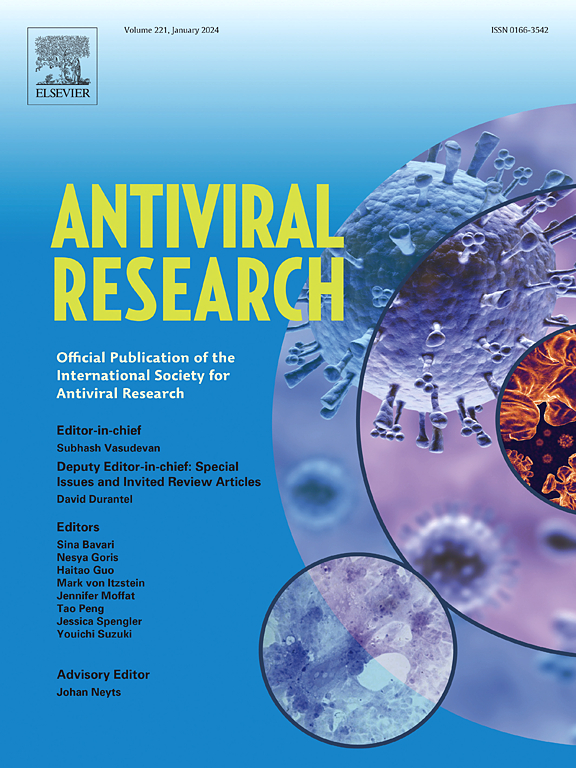“Insights in the RSV L polymerase function and structure”
IF 4.5
2区 医学
Q1 PHARMACOLOGY & PHARMACY
引用次数: 0
Abstract
Respiratory syncytial virus (RSV) continues to have a large medical and economic impact worldwide, mainly in infants, elderly, and immunocompromised patients. While several vaccines and prophylactic antibodies are now available, effective treatment options are still needed. A highly interesting target for treatment is the replication process of the virus, in which the viral polymerase complex is critical. A critical protein of this complex is the RSV large (L) protein, which harbors multiple enzymatic functions that are all interesting targets for antiviral drug discovery. Unfortunately, not all structural parts of this L protein are currently resolved, which makes antiviral drug design and optimization challenging. In this review, an overview is given of current knowledge on the RSV L structure. Furthermore, a comparison is made between the L proteins of RSV and human metapneumovirus (hMPV), which, based on their sequence similarity, could shed light on missing structural gaps. New insights into the RSV and hMPV L protein structures are given, by modeling unresolved domains with AlphaFold2 and Alphafold3. While more structural studies are needed to confirm the modeling data, there is clearly potential for development of treatments targeting the L protein, for RSV and closely related viruses.
“RSV L聚合酶功能和结构的见解”。
呼吸道合胞病毒(RSV)继续在世界范围内产生巨大的医疗和经济影响,主要是在婴儿、老年人和免疫功能低下患者中。虽然现在有几种疫苗和预防性抗体,但仍然需要有效的治疗方案。一个非常有趣的治疗目标是病毒的复制过程,其中病毒聚合酶复合物是至关重要的。该复合体的一个关键蛋白是RSV大(L)蛋白,它具有多种酶功能,都是抗病毒药物发现的有趣靶点。不幸的是,目前并不是L蛋白的所有结构部分都被解决了,这给抗病毒药物的设计和优化带来了挑战。在这篇综述中,概述了目前关于RSV L结构的知识。此外,我们还比较了RSV和人偏肺病毒(hMPV)的L蛋白,基于它们的序列相似性,可以揭示缺失的结构缺口。通过使用AlphaFold2和Alphafold3对RSV和hMPV L蛋白结构进行建模,给出了对RSV和hMPV L蛋白结构的新见解。虽然需要更多的结构研究来证实建模数据,但显然有潜力开发针对RSV和密切相关病毒的L蛋白治疗方法。
本文章由计算机程序翻译,如有差异,请以英文原文为准。
求助全文
约1分钟内获得全文
求助全文
来源期刊

Antiviral research
医学-病毒学
CiteScore
17.10
自引率
3.90%
发文量
157
审稿时长
34 days
期刊介绍:
Antiviral Research is a journal that focuses on various aspects of controlling viral infections in both humans and animals. It is a platform for publishing research reports, short communications, review articles, and commentaries. The journal covers a wide range of topics including antiviral drugs, antibodies, and host-response modifiers. These topics encompass their synthesis, in vitro and in vivo testing, as well as mechanisms of action. Additionally, the journal also publishes studies on the development of new or improved vaccines against viral infections in humans. It delves into assessing the safety of drugs and vaccines, tracking the evolution of drug or vaccine-resistant viruses, and developing effective countermeasures. Another area of interest includes the identification and validation of new drug targets. The journal further explores laboratory animal models of viral diseases, investigates the pathogenesis of viral diseases, and examines the mechanisms by which viruses avoid host immune responses.
 求助内容:
求助内容: 应助结果提醒方式:
应助结果提醒方式:


